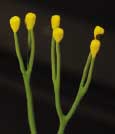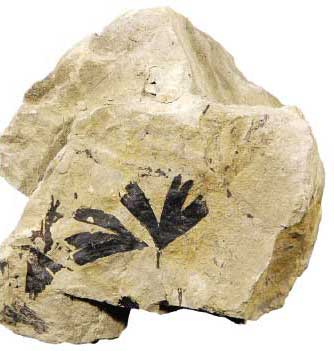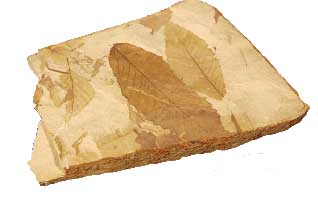Evolution of Plants and Forests
For over 100 million years after the beginning of the Paleozoic Era, until one day in the Silurian Period, the land was a vast desolate space devoid of life, whereas the sea was teeming with animals and plants. For the aquatic plants which were dependent on water, the dry atmosphere and the effects of gravity without buoyancy were the critical obstacles to colonizing the land. Some plants developed not only a vascular structure for water transportation and stem supporting, but also a hard cuticle for waterproof, which enabled them to invade land in middle Silurian Period. Eventually, the plants emerged fully on to the land.

Cooksonia, the initial vascular plant with sporangium
Paleozoic Era
Terrestrial plants initially spread from swamps and evolved rapidly as they advanced into drier inland areas. In the Paleozoic Era, almost all the terrestrial plants except angiosperms first appeared on earth and flourished as various ferns and club mosses, horsetails, primitive gymnosperms, and so on. Some of the Paleozoic forests comprising various prolific plant communities were subsequently buried and became the major coal deposits of today, widely distributed throughout the world.
Mesozoic Era
During the Mesozoic Era through which reptiles including the dinosaurs flourished, gymnosperms, with bare seeds for reproduction, started to replace the club mosses and ferns. Cycads, gingkos and conifers were abundant. Flowers originated in the Cretaceous Period as plant's attempt to use certain animals to assist reproduction, and the honey and fruit promoted further evolution, serving as food for certain animals. According to the fossil record, early angiosperms appeared in the late Jurassic to early Cretaceous Periods. However, according to recent studies of molecular taxonomy, it was about 290 million years ago in the late Carboniferous that angiosperms branched off from the gymnosperms.

Leaves of a ginkgo Yorkshire, UK

Leaves of beech (angiosperm) Quercus zellerei, Pohang, Korea
Cenozoic Era
The Earth has experienced severe climatic changes from the end of the Cretaceous Period when it was very warm and humid to the present when distinct climatic belts are developed. The major change occurred about 45 million years ago. Amid the climatic variation, angiosperms expanded their territory, diversifying rapidly after the beginning of the Cenozoic Era. Vast grasslands gradually came into view with the appearance of grass, a kind of angiosperm, about sixty million years ago.